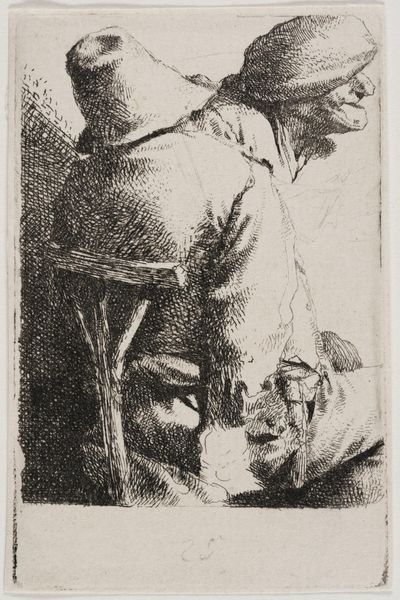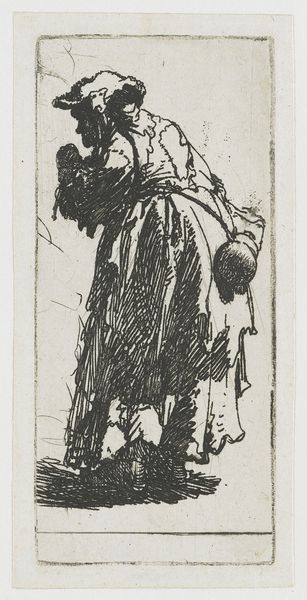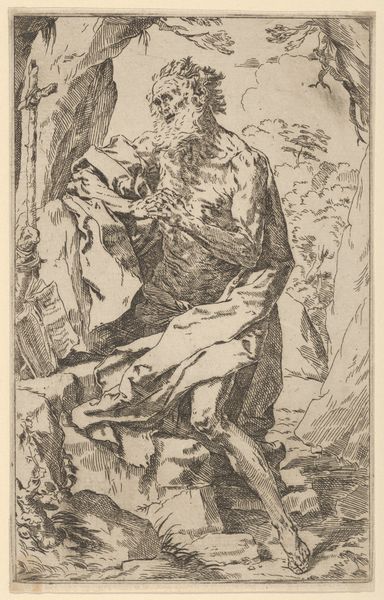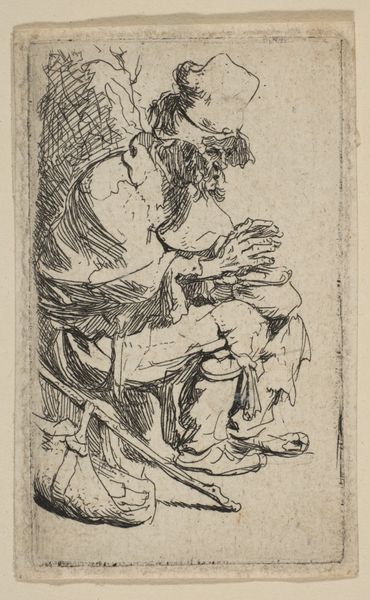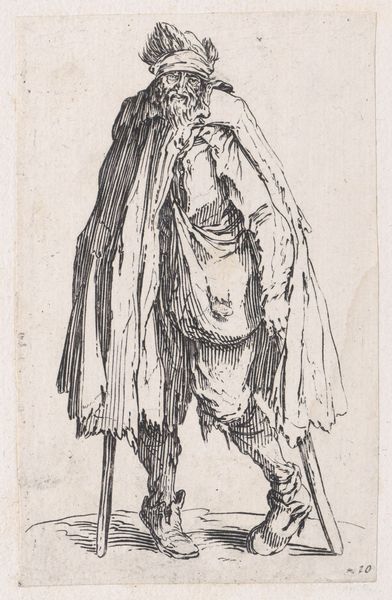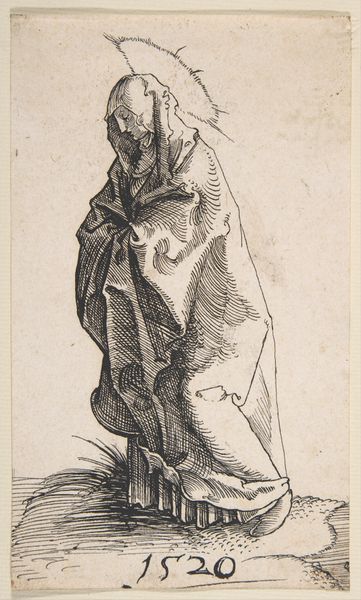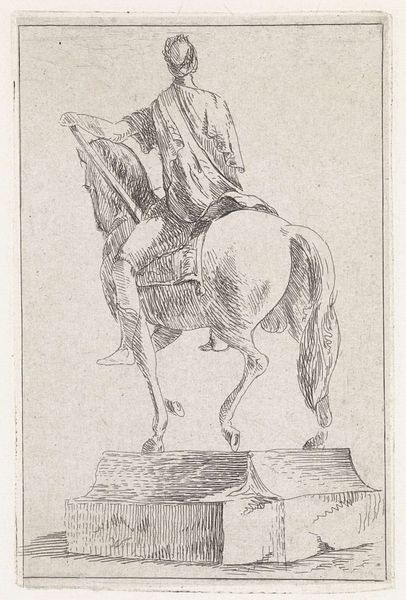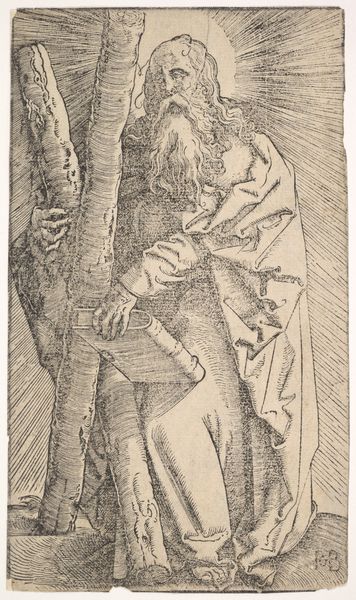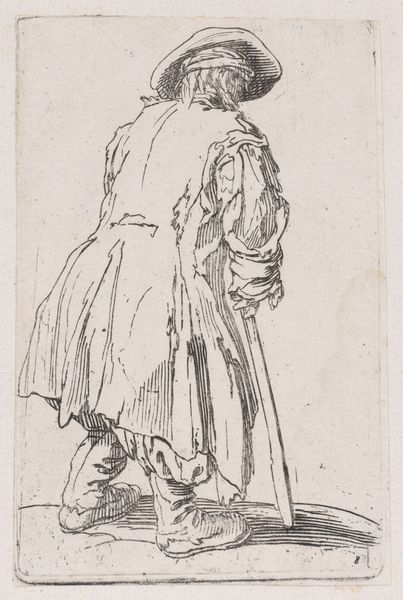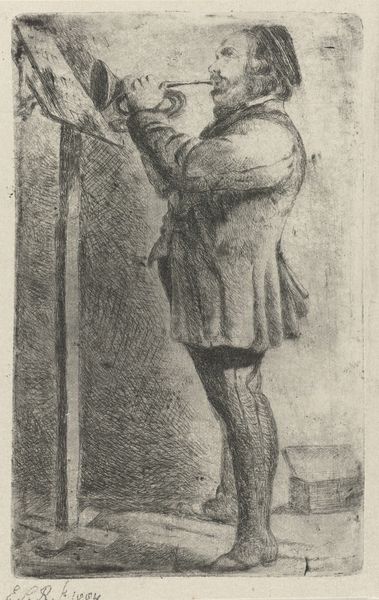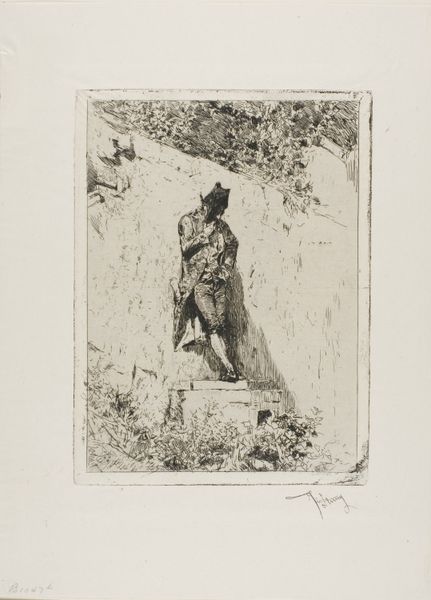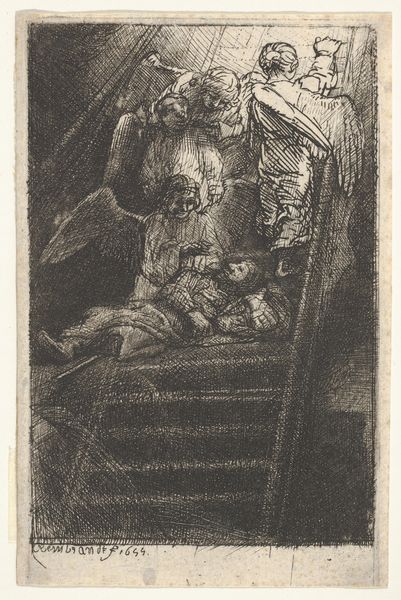
#
pencil drawn
#
amateur sketch
#
toned paper
#
light pencil work
# print
#
pencil sketch
#
old engraving style
#
charcoal drawing
#
pencil drawing
#
portrait drawing
#
pencil work
Copyright: National Gallery of Art: CC0 1.0
Curator: Let’s take a look at “The Seated Peasant and His Wife” by Cornelis Bega. It’s rendered as a print using what seems to be primarily pencil work on toned paper. What’s your first take? Editor: My initial feeling is one of intimacy, surprisingly. The composition feels cramped, almost voyeuristic, yet the subjects seem undisturbed, caught in a private moment of, perhaps, quiet resignation. The stark contrast also makes it somewhat somber. Curator: That sense of intimacy is interesting, given Bega’s background. He specialized in genre scenes – paintings and prints that depicted everyday life, particularly of peasants, and often with a critical eye towards their… perceived vices. How does this small print contribute to his social commentary? Editor: I find the details telling. Their hats, the worn clothes...symbols of labor and rural life. It reflects a culture bound by the necessities, marked by physical work. Note the way the artist renders the hands especially – they tell stories of labor, almost hinting at the conditions of the Dutch working class. Curator: Exactly. The materiality of their lives is etched into the very lines of the print. Bega's technique, using simple pencil work to achieve such textural detail, also raises questions about the accessibility of art itself. Was he democratizing art production through printmaking? Editor: I agree, his art captures something profoundly resonant beyond social class. Notice the recurring visual motifs: the slouching posture mirroring a kind of weary resignation or even the table between them, suggesting, in turn, the daily bread or a domestic altar of sorts. Curator: Do you see it, perhaps, reflecting specific gender roles of that era? The peasant's wife is literally behind him, a secondary figure in the social hierarchy. Editor: Precisely. These characters seem so stoic and unyielding – these could stand as archetypes in art through the ages, I think, conveying similar meaning each time they are re-worked in visual culture. Curator: It certainly provides fertile ground for considering how these roles were constructed and maintained in Dutch society through image production and dissemination. Looking closely at process helps contextualize these deeper symbolic issues, as well. Editor: Yes, in considering the material realities behind the images and their symbolism together, we gain a far richer sense of this moment frozen in time. It invites speculation on human relationships, toil, and cultural memories – all thanks to what on the surface is but a humble little drawing. Curator: Agreed. This piece speaks volumes in its delicate, direct portrayal and offers layers for further research.
Comments
No comments
Be the first to comment and join the conversation on the ultimate creative platform.
